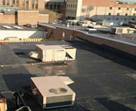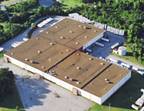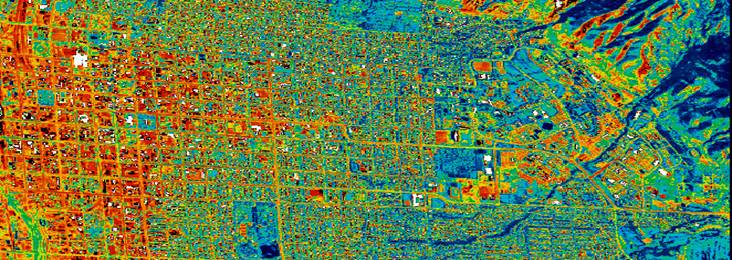|
USA Green Solutions |
|
INTEGRATING RETROFIT SOLUTIONS FOR COMMERCIAL MARKETS |
|
Urban Heat Island Effect |
|
A few years ago, Sacramento was part of a Heat Island case study by NASA. In a mid-day summer flyover with infrared equipment, NASA plotted surface temperatures on color-coded maps. The tree-lined Capitol Mall is a cool, blue rectangle surrounded by a sea of orange and red; roads and rooftops where surface temps can run to 140 degrees or more. |
|
Large contributors are the buildings, concrete, asphalt, tar roof tops and industry that have caused cities to reach higher temperatures than surrounding rural areas. |


|
What Is an Urban Heat Island? As urban areas develop, changes occur in their landscape. Buildings, roads, and other infrastructure replace open land and vegetation. Surfaces that were once permeable and moist become impermeable and dry. This change in landscape may differ in regions such as deserts, where moisture may increase in urban areas if development introduces grass lawns and other irrigated vegetation. These changes cause urban regions to become warmer than their rural surroundings, forming an "island" of higher temperatures in the landscape. |

|
As the cities get bigger and bigger you get a more concentrated hot spot in the middle and our suburbs are getting hotter and hotter. This what scientists call an "urban heat island;” an effect that triggers a vicious cycle of higher energy bills and air pollution. The larger cities are generating an extra 6-14 degrees and even higher temperatures on rooftops. |


|
These solids are also referred to as "impervious surfaces" -- absorb more solar radiation by day. At night, much of that heat is given up to the urban air, creating a warm bubble over a city that can be as much as 1 to 3°C (2 to 5°F) higher than temperatures in surrounding rural areas. |
|
This “urban heat island effect” was recognized by our engineers when gathering data for a chain of pharmacy stores in Phoenix Arizona. The ground temperature was 91 degrees, but on the roof it was registered at 119 degrees. In this study we observed the roof top units (RTU HVAC) inefficiently trying to air cool the hot refrigerant. With the refrigeration condensers, the HVAC’s, and the constant units running to supply the ventilation in the building caused the extra hot air to stagnate, this alone creates its own hot spot.
This one solution was documented to save this one location a 42% reduction in energy consumption. This estimated saving was $16,202.00 a year based on APS kw price. |